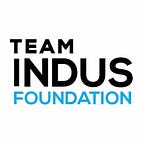Space… On A Bus
Moonshot Wheels Turns 1
Science becomes inspiring when you experience it.
It was something out of the world! A bus — fully equipped to capture the imagination of every child or adult who came in contact with — letting them into a world of the mysteries of space exploration and the universe!
Bringing Science to Life
It was a year ago, on the 8th of February 2017, that Moonshoot Wheels began its tremendous journey around India — all set to ignite a wonder, curiosity and fascination with science and the final frontier — Space. Equipped to share the TeamIndus Moon Mission and get students to experience and learn from the artifacts and learning videos, this bus was one of its kind.
Covering over 44,000+ students from government schools across India, Moonshot Wheels was all about inspirational and experiential learning. It created over 1600 Young Instructors, mentors who took it upon themselves to learn everything about space, the moon mission and science experiments on board, and become the teachers for their colleagues.
The bus goes to areas where opportunities for hands-on, experiential learning are few and far in between.
As the bus completes 1 year on road, let’s go down the memory lane and take a look at our crazy journey so far.
The Program Design
The bus would arrive at the desired location and set up the workshop for two weeks. Selected school children — called the Young Instructors — are trained over two days about the various exhibits and models by Agastya Foundation’s teachers. Over 1600 Young instructors have been trained so far in the fair.
Once the trainers are ready, children from other schools in the region are invited to experience the bus. The Young Instructors start the talking and the space tour begins!
Physical Models of Astronomical Worlds
Through 3D models of the Sun, the Earth, and the Moon, students got a tactile understanding of various astronomical objects and their interplay. From learning why we see different phases of the Moon from Earth to how seasons on Earth occur, the young ones kept firing questions that caught us completely off-guard. And we could not have been more pleased.
A total of 16 such astronomical models were on display, notably one showing the size comparison of planets to the Earth and Sun. Being able to perceive just how much larger Jupiter and the Sun are than the Earth amazed them.
Experiencing the Moon mission on Earth
On a lunar test bed in a semi-lit section, a rover slowly crawls across the bed with a wave-like motion. The eyes of the students huddled in front of the test bed widen, as this is the first time many of them have seen a rover.
A section of the bus has a simulated lunar surface with scaled models of the TeamIndus spacecraft and a working rover on it, where kids learn about the mission.
Audio-visual aids are also provided with explanations in 6 different local languages to make sure every kid coming to this fair is able to get involved.
Creativity is intelligence having fun. From building honeycomb structures out of paper to building their own tensegrity models, the do-it-yourself spirit was always in the air.
Eavesdropping on the Astronauts
The bus has an antenna, which combined with the Orbitron software, is used to track satellites, including the International Space Station (ISS). Sometimes when the ISS was overhead, the kids could hear astronaut chatter!
Impact
Learning for us is also a continuous process. We are constantly making revisions, improvements and adding new features, all in an effort to bring the most engaged learning method for the kids.
Based on the 4-day workshop at Raigad with a student strength of 687 (332-M, 355-F), we charted the performance based on the questions asked from the students at the end of the workshop. We found that the performance at the end of the fair is higher than the beginning.
The Young Instructors get more confident and are able to express & explain better with time. Their improved ability in imparting knowledge to their peers influences the performance of the visiting students. Based on this insight, we are considering increasing the workshop duration to enable better knowledge transfer.
We will keep adding insights and findings here on the blog as we continue our analysis.
The Journey Continues…
It has been a memorable journey for us, both professionally and personally. The messages sent by these kids forever remind us of the relevance of outreach programs such as this.
Looking back at why we started it all, I think we just wanted to go out there and engage with every child out there to make this their moonshot. We knew that if we were able to inspire even 10% of the kids covered in this journey, it would be a huge impact.
To see kids being inspired at the end of each program makes us want to keep continuing the program. And we intend to do just that.
We received several messages during the course of the program from several students from parts of the country that we could not cover this time. And we don’t think that’s fair!
We are planning phase 2 of Moonshot Wheels to make sure all of you join us in our mission to take space to millions. Do write to us at moonshot@teamindusfoundation.org if you have any thoughts/suggestions to share with us on this.
Let’s collaborate together and make this a success! :)
